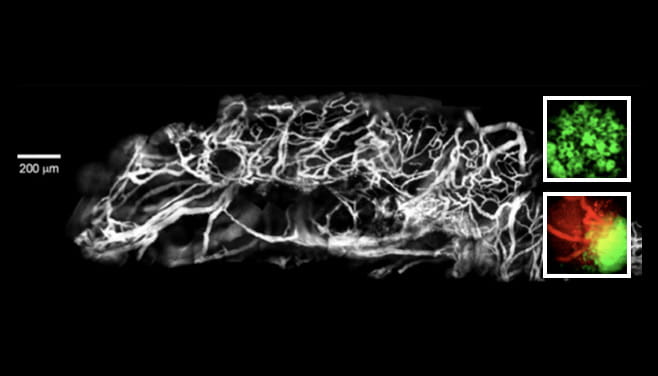PS-OC CTO Core 2

The broad goals of the Advanced Intravital Microscopy Core are to provide the Physical Sciences — Oncology Center (PSOC) projects with a number of unique advanced optical systems, to collaborate with the project investigators in the design, execution and analysis of animal experiments, as well as to develop new instrumentation and methodology as needs arise.
The core will be established in Boston within the Wellman Center for Photomedicine at Massachusetts General Hospital (MGH) under Seok-Hyun (Andy) Yun (Harvard University/Mass General Hospital). The laboratory space is well suited for live animal imaging, with its own dedicated murine facility connected to the imaging facility on the same floor, and proximity to the MGH animal facility located in the basement of the building. Routine intravital microscopy experiments will be carried out in Houston within the new Center for Advanced Biomedical Imaging Research (CABIR) building where a room for this activity has been allocated and specifically designed.
Figure 1: Side-view endomicroscopy. Longitudinal cellular imaging can visualize the progression of colorectal tumors and the microenvironment in vivo during premalignant as well as metastatic stages. Images on the right side show the GFP+ human colorectal carcinoma cells (green) implanted in the colon and the vessels (red) in the periphery of the tumor.
The core will be established in Boston within the Wellman Center for Photomedicine at Massachusetts General Hospital (MGH) under Seok-Hyun (Andy) Yun (Harvard University/Mass General Hospital). The laboratory space is well suited for live animal imaging, with its own dedicated murine facility connected to the imaging facility on the same floor, and proximity to the MGH animal facility located in the basement of the building. Routine intravital microscopy experiments will be carried out in Houston within the new Center for Advanced Biomedical Imaging Research (CABIR) building where a room for this activity has been allocated and specifically designed.
Figure 1: Side-view endomicroscopy. Longitudinal cellular imaging can visualize the progression of colorectal tumors and the microenvironment in vivo during premalignant as well as metastatic stages. Images on the right side show the GFP+ human colorectal carcinoma cells (green) implanted in the colon and the vessels (red) in the periphery of the tumor.
